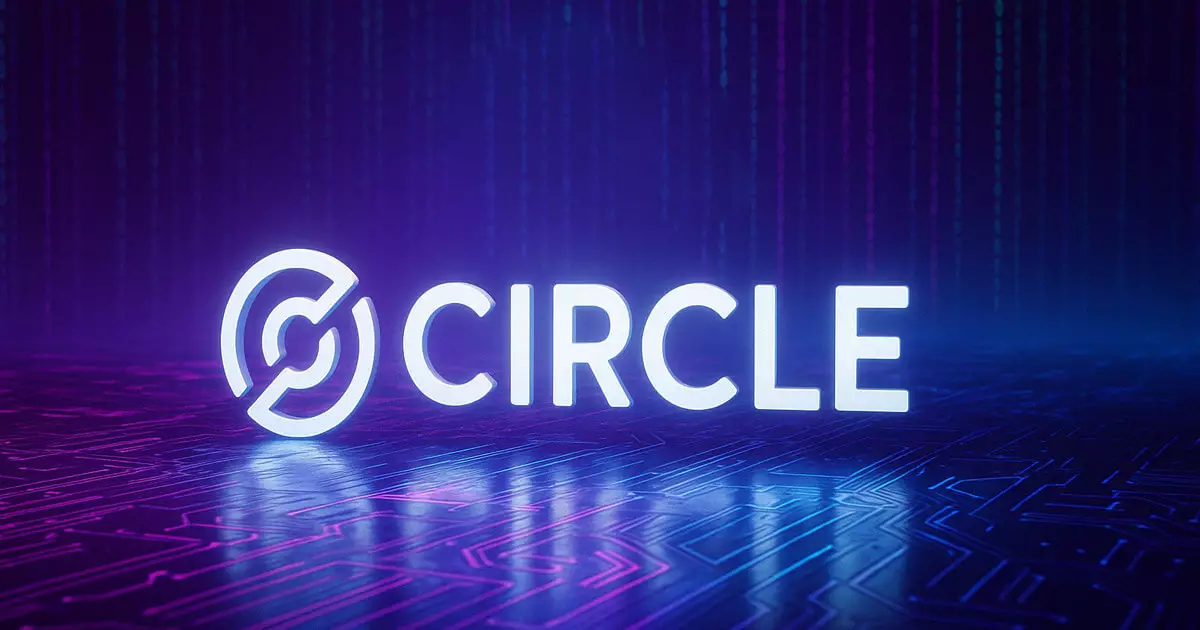The recent performance of Circle’s shares, which surged by an astonishing 34% to close at $199.59 on June 18, stands as a testament to the dynamic nature of the cryptocurrency market. This uptick, driven significantly by the passage of the GENIUS Act, reflects a growing confidence among investors in the regulatory framework surrounding stablecoins. The act, which aims to provide clarity and oversight to the stablecoin sector, was approved by the Senate in a resounding 51-23 vote. While Circle CEO Jeremy Allaire celebrated this momentous occasion as “history being made,” the implications of this legislative nod extend far beyond corporate jubilation—they represent a pivotal moment for U.S. economic competitiveness.
The new high of $200.90 signifies not only a remarkable leap from the original public offering price of $31 but also a broader endorsement of stablecoins as legitimate financial instruments. Yet, while Circle and its allies revel in this success, it is crucial to scrutinize the repercussions of this legislative framework. For instance, the requirement for issuers to hold reserves equivalent to their outstanding tokens raises pertinent questions about liquidity and the constraints it imposes on issuers. Lawmakers must ensure that these requirements do not stifle innovation in an industry that thrives on agility.
Economic Implications of the GENIUS Act
From an economic standpoint, the GENIUS Act positions the U.S. to play a formidable role in global financial innovation. By mandating that stablecoin issuers maintain reserves in cash or short-dated Treasuries, the act aims to bolster confidence in these digital assets while safeguarding consumer interests. Nonetheless, one must consider whether this approach is overly restrictive, potentially marginalizing smaller issuers who may find compliance burdensome. The delineation between firms with over $10 billion in liabilities and those operating under state regimes is an attempt to balance oversight with flexibility; however, clarity in this division will be paramount to prevent unintended market monopolies.
Moreover, Circle’s ability to retain earnings from the Treasuries backing its USDC tokens without sacrificing its revenue model showcases the financial acumen embedded within its operations. Yet, as larger entities like Coinbase benefit from distribution agreements tied to custodial balances, one can’t overlook the potential for growing disparities between large and small players in the market. These legislative changes undeniably have the power to shape the future landscape of cryptocurrencies in the U.S., but they must be approached thoughtfully to ensure a level playing field.
Market Reactions and Future Outlook
Investors’ reactions to legislative advancements in the cryptocurrency sector reflect a broader trend of optimism. Notably, the share prices of other notable players—such as Coinbase and Robinhood—also experienced spikes, signaling a contagion effect that often accompanies significant regulatory news. Such interdependence showcases the fragile but potent ecosystem of digital assets where policy decisions reverberate across multiple platforms.
As the House Financial Services Committee prepares for discussions regarding the GENIUS Act, anticipation builds for its future implications. The timeline to submit the legislation to the President before the August recess adds urgency to discussions that could reshape the competitive landscape for digital finance significantly. While Circle and the broader cryptocurrency market bask in the light of this positive development, it is imperative for all stakeholders to maintain a vigilant, critical eye on the evolving regulatory environment that could either fuel or hinder innovation and competition in this burgeoning arena.


Leave a Reply